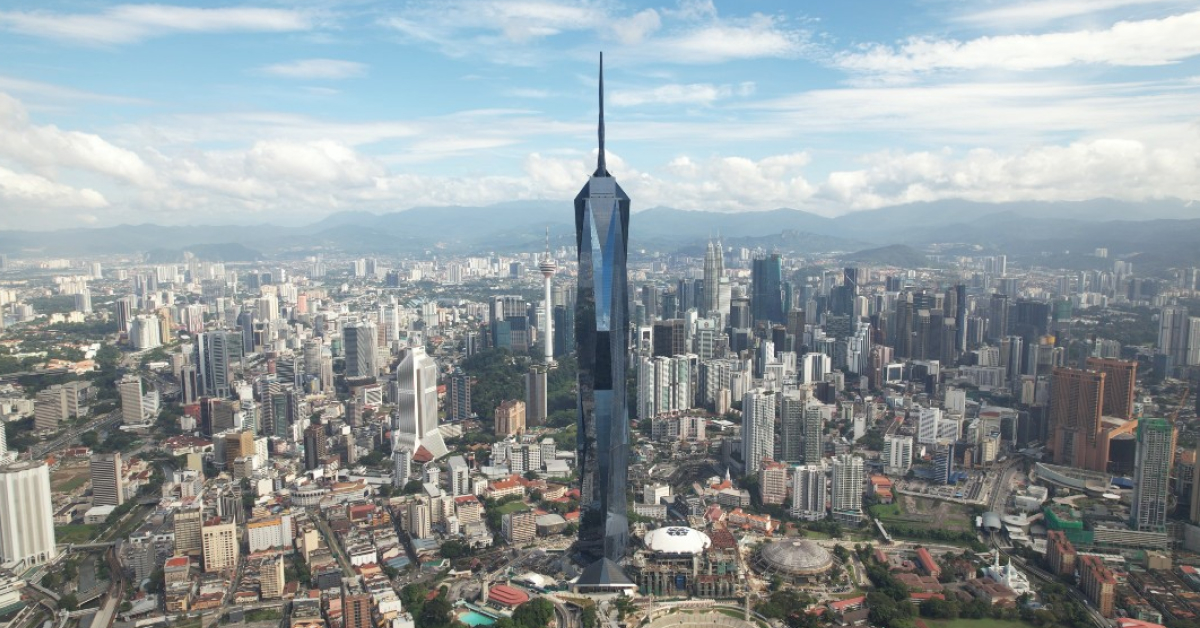Merdeka 118, built by Samsung C&T Engineering and Construction (E&C) Group, stands as Malaysia’s tallest building and the second tallest building in the world. This engineering marvel blends Malaysia’s historic journey to independence with cutting-edge construction techniques, overcoming challenges posed by extreme heights and tropical weather conditions.
Standing at 678.9 meters, Merdeka 118 has redefined the skyline of Kuala Lumpur, symbolizing Malaysia’s past and aspirational future. Constructed by the Samsung C&T E&C Group, this towering structure is now the tallest building in Southeast Asia and the second tallest building in the world. The world’s tallest building, Dubai’s Burj Khalifa, is a landmark building that was also constructed by Samsung C&T’s E&C Group.
The Merdeka 118 not only represents architectural and engineering brilliance but also pays homage to Malaysia’s history. Its name, “Merdeka,” translates to “independence,” celebrating the nation’s independence proclaimed in 1957 at the nearby Stadium Merdeka.
Constructing one of the world’s tallest buildings, spanning 118 stories, required groundbreaking engineering solutions. Merdeka 118’s spire, which adds a striking 160 meters to its height, was installed using an advanced hydraulic jack, a complex technique that allowed precise placement and alignment despite the challenges of building at such heights.
The design of the Merdeka 118 incorporates five major structural systems, including a robust core and belt trusses that connect the mega-columns, ensuring stability against both vertical and lateral forces. The Samsung C&T E&C Group employed a raft foundation at extraordinary scale and a core structure reinforced by eight mega-columns, each measuring approximately 4.5 by 5 meters in width, to support the skyscraper’s immense height and weight.
Constructing Merdeka 118 in Kuala Lumpur’s tropical climate posed unique challenges, including frequent heavy rainfall and thunderstorms. To navigate these conditions, the Samsung C&T E&C Group implemented advanced weather monitoring systems and safety protocols to protect workers and ensure that construction continued smoothly.
Daily weather variations were a constant variable during the project’s almost nine years of construction. As a result, a lightning warning system was installed, allowing workers to evacuate construction zones safely during electrical storms. Additional efforts were made to control the quality of concrete pours during consistent wet weather conditions, preventing potential structural weaknesses.
Merdeka 118’s construction required the coordination of over 3,000 workers at peak times, each contributing to the project’s success through precise timing and teamwork. Managing the vertical transport of materials was a critical aspect of the construction process, as delays in moving people and equipment to the correct locations could lead to significant time and cost overruns.
Merdeka 118 is more than just a skyscraper—it’s a beacon of national pride and a symbol of Malaysia’s journey to independence. Its diamond-like exterior mirrors the stance of Malaysia’s first Prime Minister, Tunku Abdul Rahman, as he declared the Federation of Malaya’s independence at Stadium Merdeka in 1957.













